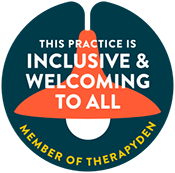Premenstrual Dysphoric Disorder (PMDD) and Premenstrual Syndrome (PMS) are often mentioned interchangeably, but understanding the distinction is crucial, especially for mental health awareness. While PMS is relatively common and typically involves mild emotional and physical symptoms like irritability, bloating, and fatigue, PMDD is a far more severe condition that can significantly disrupt daily life.
Women with PMDD may experience intense mood swings, debilitating anxiety, deep sadness, and even thoughts of hopelessness, often in the week leading up to menstruation. Recognizing these differences is key to seeking appropriate support and treatment rather than dismissing the symptoms as “just part of being a woman.”
From a mental health perspective, PMDD is not simply a hormonal inconvenience, it is a serious mood disorder with major impacts. The emotional and cognitive symptoms can mimic or exacerbate conditions like depression and anxiety, making timely diagnosis and intervention essential. Raising awareness about PMDD helps reduce stigma and empowers those affected to access mental health care, explore coping strategies, and find relief. Understanding the difference between PMS and PMDD is the first step toward validating the lived experiences of those who face this challenging condition each month.
Anchor Therapy is a counseling center in Hoboken, NJ with mental health therapists specialized in helping children, teens, adults, couples, and families with anxiety, depression, relationship issues, trauma, life transitions, and more. Anchor Therapy is accepting new clients and is now providing in-person sessions and teletherapy sessions to residents of New Jersey, New York, and Florida.
What is the difference between PMDD and PMS?
PMS is a common condition that affects a large percentage of menstruating individuals, typically occurring one to two weeks before menstruation. Symptoms can be both physical; such as bloating, breast tenderness, fatigue, and headaches; and emotional, including irritability, mild anxiety, and mood swings. For most people, these symptoms are mild to moderate and manageable with self-care strategies, lifestyle adjustments, or over-the-counter remedies. PMS usually resolves with the onset of menstruation and does not significantly interfere with daily functioning. To prioritize yourself during PMS, check out our blog “The 8 Forms of Self-Care and How You Can Practice Them.”
What are the emotional and mood-related symptoms of PMS?
Irritability or short temper
Mild anxiety or nervousness (Read our blog “Natural Anxiety Solutions That Actually Work”)
Sadness or tearfulness (Read our blog “Sadness vs Depression: When to Get Help”)
Mood swings or emotional sensitivity
Difficulty concentrating
Feeling overwhelmed or easily stressed (Check out our blog “Everything You Need to Know About Stress Management Therapy”)
PMDD is a more severe and relatively rare condition, affecting an estimated 3–8% of women of reproductive age. While it shares some physical and emotional symptoms with PMS, PMDD is characterized by extreme mood disturbances that significantly impair social, occupational, and personal functioning. Symptoms can include severe depression, persistent irritability, anxiety, hopelessness, and intense mood swings. Physical symptoms like bloating, breast tenderness, and fatigue may also occur, but it is the emotional intensity and functional impact that distinguishes PMDD from PMS.
What are the emotional and mood-related symptoms of PMDD?
Severe mood swings
Depression or deep sadness (Read our blog “3 Benefits of Working With A Depression Therapist”)
Intense irritability or anger (View our blog “The Most Important Things You Need to Know About Anger Management”)
Heightened anxiety or tension
Crying spells
Extreme sensitivity to rejection or criticism (Read our blog “5 Ways to Overcome Your Fear of Rejection”)
Loss of interest in usual activities
Difficulty concentrating
Low self-esteem (View our blog “Do You Understand Your Self-Esteem?”)
Negative self-talk (Our blog “Cognitive Behavioral Therapy (CBT) for Negative Self-Talk” is a must-read)
Emotional overwhelm (Check out our blog “How to Regulate Your Emotions”)
Thoughts of hopelessness
The most notable difference between PMS and PMDD lies in severity. PMS symptoms are typically tolerable and do not drastically interfere with work, school, or relationships. PMDD, on the other hand, can be debilitating. Individuals with PMDD may struggle to perform daily tasks, maintain social connections, or manage responsibilities, especially during the luteal phase of the menstrual cycle. Emotional symptoms may feel overwhelming, sometimes leading to thoughts of self-harm or a need for urgent mental health intervention.
Both PMS and PMDD symptoms occur during the luteal phase which is the period after ovulation and before menstruation begins. PMS symptoms generally start a few days to a week before menstruation and taper off once bleeding begins. PMDD symptoms follow a similar timing but are consistently more intense and disruptive. The cyclical nature of PMDD symptoms, combined with their severity, often leads to a predictable pattern of emotional and physical distress each month which can help with diagnosis.
The exact causes of PMS and PMDD are not fully understood, but hormonal fluctuations, particularly changes in estrogen and progesterone, play a central role in both. PMDD may involve heightened sensitivity to these hormonal shifts which can alter neurotransmitter activity in the brain, including serotonin, a key regulator of mood. This sensitivity explains why PMDD manifests with severe psychological symptoms whereas PMS typically remains milder. Genetics, stress, and lifestyle factors may also influence symptom severity in both conditions.
Management strategies differ based on severity. PMS often responds well to lifestyle modifications, including regular exercise, balanced nutrition, adequate sleep, and stress-reduction techniques. PMDD, however, usually requires more targeted interventions. Treatment can include medicine and Cognitive-Behavioral Therapy (CBT), and other mental health support strategies. Early recognition and intervention are essential to minimize the impact on emotional well-being, daily functioning, and quality of life. To learn more, read our blog “Why You Are Depressed Around Your Period: All About PMDD.”
Is PMDD a mental health problem?
PMDD is recognized as both a hormonal and mental health condition. While it originates from the body’s natural hormonal cycle, its most distressing symptoms are psychological which include severe mood swings, depression, anxiety, irritability, and emotional sensitivity. Because of these intense emotional changes, PMDD is classified as a mood disorder in the Diagnostic and Statistical Manual of Mental Disorders (DSM-5), the same guide mental health professionals use to diagnose conditions like depression and anxiety disorders. This classification emphasizes that PMDD is not simply a severe form of PMS but a legitimate mental health concern requiring clinical attention.
The mental health aspect of PMDD is particularly significant because of its impact on emotional well-being and daily functioning. Many people with PMDD experience symptoms that mirror those of Major Depressive Disorder (MDD), such as hopelessness, loss of interest in life, and in some cases, suicidal thoughts. Feeling suicidal? Help is only a phone call away at the free National Suicide Prevention Lifeline: 988.
These symptoms often appear cyclically, intensifying before menstruation and subsiding afterward, which can make the condition feel unpredictable and exhausting. Without proper diagnosis, individuals may mistakenly believe they have chronic depression or anxiety, when in fact their symptoms are hormonally driven and follow a monthly pattern.
Fortunately, recognizing PMDD as a mental health condition opens the door to effective treatment and support. Interventions such as antidepressants), CBT, lifestyle changes, and hormonal treatments can significantly reduce symptom severity. Just as importantly, mental health awareness helps reduce stigma and encourages those affected to seek help rather than suffer in silence. Viewing PMDD through a mental health lens validates the emotional struggles it causes and empowers individuals to pursue comprehensive care for both mind and body. Read our blog “5 Ways to Nurture Your Mind-Body Connection.”
What happens to your brain during PMDD?
During PMDD, the brain responds abnormally to the natural hormonal changes that occur in the menstrual cycle, particularly fluctuations in estrogen and progesterone after ovulation. While these hormones influence mood and cognition in everyone, people with PMDD have brains that appear to be more sensitive to these changes. This means that even normal hormonal shifts can trigger intense emotional reactions, leading to symptoms such as depression, anxiety, and irritability. Research suggests that PMDD is not caused by abnormal hormone levels, but rather by the brain’s heightened reactivity to hormonal signals.
One of the key players in this process is serotonin, a neurotransmitter that helps regulate mood, sleep, and appetite. Hormonal changes during the luteal phase can alter serotonin activity, leading to mood instability and emotional distress. In people with PMDD, serotonin levels may drop more sharply or fail to recover efficiently which can explain the sudden onset of sadness, irritability, and anxiety before menstruation. This is also why medications like SSRIs which boost serotonin activity are often effective treatments for PMDD.
Brain imaging studies have shown that PMDD can affect the functioning of areas such as the amygdala, prefrontal cortex, and anterior cingulate cortex- all of which are regions responsible for emotional regulation, decision-making, and impulse control. When these areas become more reactive to hormonal changes, the result is a heightened emotional response to stress or perceived conflict. This neurological sensitivity makes it harder for individuals with PMDD to manage emotional triggers that might feel minor at other times of the month.
Overall, PMDD represents a complex interaction between hormones and the brain’s mood-regulating systems. It is not “all in your head,” but rather a measurable neurobiological response that impacts emotional health. Understanding what happens in the brain during PMDD helps validate the experiences of those affected and emphasizes the need for compassionate, evidence-based mental health care. At Anchor Therapy, our therapist for women’s issues specialize in treating PMDD.
What therapy is used for PMDD?
Therapy plays a key role in managing PMDD), particularly because many of its most challenging symptoms are emotional and psychological. While medications like SSRIs and hormonal treatments can address the biological aspects, therapy focuses on helping individuals understand, cope with, and reduce the emotional distress associated with the condition. Since PMDD can affect mood, self-esteem, and relationships, therapeutic support provides a safe space to identify patterns, process emotions, and develop strategies to maintain stability throughout the menstrual cycle.
The most widely used and researched form of therapy for PMDD is CBT. CBT helps individuals recognize and change negative thought patterns and behaviors that worsen emotional symptoms. For example, during PMDD flare-ups, a person may experience overwhelming thoughts of hopelessness or guilt. CBT teaches tools to challenge those thoughts, identify cognitive distortions, and replace them with more balanced, realistic perspectives.
Mindfulness-based therapies, such as Mindfulness-Based Cognitive Therapy (MBCT) or mindfulness meditation, are also beneficial for PMDD. These approaches encourage self-awareness and emotional acceptance rather than resistance or judgment. By learning to observe emotions as they arise, individuals can better manage the mood swings and irritability common in PMDD. Techniques like deep breathing, body scanning, and guided relaxation can help regulate the nervous system and reduce physiological stress responses triggered by hormonal fluctuations. Read our blog “5 Breathwork Techniques to Decrease Anxiety.”
What are the benefits of therapy for PMDD?
Helps manage intense mood swings, anxiety, and depression
Reduces feelings of hopelessness, guilt, and irritability
Improves emotional awareness and self-understanding
Builds resilience during the luteal phase (the premenstrual period)
Promotes self-compassion and reduces self-blame
Therapy for PMDD is often most effective when combined with a holistic treatment plan, including medical management, lifestyle changes, and self-care strategies. Regular exercise, adequate sleep, balanced nutrition, and journaling can complement therapeutic progress. Because PMDD is both biological and psychological, addressing it from multiple angles yields the best results. Ultimately, therapy can empower you to regain control of your emotional well-being and reduce symptom severity.
Living with PMDD can be incredibly challenging, but understanding the condition is the first step toward reclaiming balance and emotional well-being. By recognizing the difference between PMS and PMDD, exploring how hormones affect the brain, and seeking support through therapy and holistic care, individuals can find real relief and validation. PMDD is not a reflection of weakness. Instead, it is a legitimate, treatable disorder that deserves compassion, awareness, and proper care. With the right tools, treatment, and understanding, it is entirely possible to move from merely surviving each cycle to thriving with confidence and self-awareness.
Understanding the difference between PMS and PMDD is crucial because it directly impacts diagnosis, treatment, and quality of life. While PMS is generally mild and manageable with lifestyle adjustments, PMDD is a serious mood disorder that can disrupt work, relationships, and daily functioning. Mislabeling PMDD as “just PMS” can delay access to effective therapies, leaving you to suffer unnecessarily each month. By clearly distinguishing between the two, healthcare providers and loved ones can respond with appropriate support, interventions, and empathy through validating the experiences of those affected and ensuring they receive the care they truly need.
Victoria Scala
is the Social Media Manager, Intake Coordinator, and Community Engagement Director at Anchor Therapy in Hoboken, New Jersey. She is a graduate of the Honors College of Rutgers University-Newark and is currently studying Clinical Mental Health Counseling at the graduate level. In her roles, Victoria is committed to managing the office’s social media/community presence and prioritizing clients' needs.
IF YOU’RE LOOKING FOR HELP FROM A PROFESSIONAL COUNSELOR TO ASSIST YOU IN MAKING POSITIVE CHANGES IN YOUR LIFE, CONTACT US
WORKING WITH US IS EASY
Fill out the contact form below.
Our intake coordinator will get back to you with more information on how we can help and to schedule an appointment. We will set you up with an experienced licensed therapist who specializes in what you're seeking help with and who understands your needs.
You’ll rest easy tonight knowing you made the first step to improve your life.



















